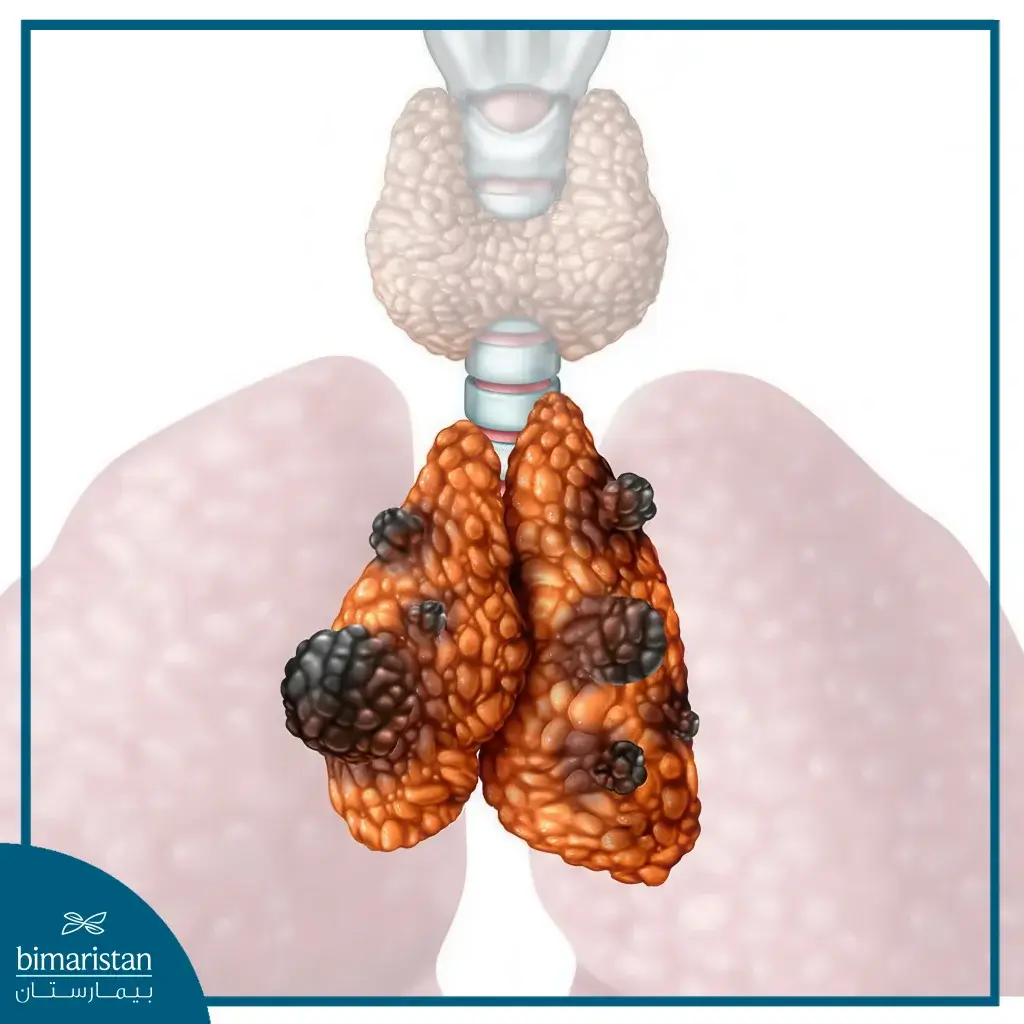In the world of modern medicine, surgery no longer means large incisions and long recovery periods. Today, with the development of vats mediastinal tumor surgery, deep chest tumors can be treated with precision and minimally invasive techniques. Imagine a surgical procedure that treats the tumor from the inside and gives the patient a chance for a quick recovery and fewer complications. In this article, we explore how vats mediastinal tumor surgery is a game-changer in the treatment of mediastinal tumors and why it is increasingly becoming the choice of top surgeons around the world.
What is the mediastinum, and what types of tumors are there?
The mediastinum is the central part of the chest, located between the lungs, and includes several important vital structures such as the heart, major blood vessels, trachea, esophagus, thymus, and lymph nodes. When tumors form within this area, they are called mediastinal tumors, which may be benign or malignant, and the location of the tumor within the mediastinum, whether in the anterior, middle, or posterior part, is an important factor in determining its source and type.
Types of mediastinal tumors
- Tumors of the thymus gland: Often found in the anterior mediastinum, they can be benign or malignant and are one of the most common tumors in this area.
- Lymphomas: These include cancers of the lymphatic system and usually affect lymph nodes within the mediastinum and are relatively common in adults.
- Germ cell tumors: Originating from germ cells and often found in the anterior mediastinum, they can be benign, like teratomas, or malignant.
- Neurogenic tumors: These arise from nerves and are most common in the posterior mediastinum, especially in children.
- Mediastinal bags: These include fluid-filled sacs such as anterior intestinal sacs, pericardial sacs, and bronchial sacs.
- Other tumors are less common: They can arise from thyroid or parathyroid tissue, or blood vessels and muscle tissue within the mediastinum.

What is vats mediastinal tumor surgery?
vats mediastinal tumor surgery is a modern medical technique used to remove tumors from the mediastinum. This surgery aims to minimize traditional surgical intervention by using precise instruments and a scope inserted through small incisions in the chest instead of opening the sternum or making a large incision between the ribs.
In this procedure, the surgeon inserts a small camera (scope) through one of the incisions to provide a magnified and clear view of the tumor site while specialized surgical instruments are used through the other incisions to carefully and precisely remove the tumor. This approach is a safer and more comfortable alternative for many patients, with less pain after surgery, faster recovery, shorter hospital stays, and better cosmetic results due to smaller scars.
This technique is used to treat a range of mediastinal tumors, including thymomas, neuromas, and some types of mediastinal cysts. However, the decision to use this approach depends on several factors such as the size of the tumor, its location, and the extent of its spread to surrounding tissues. In some cases, traditional open surgery may be needed to ensure complete removal of the tumor.
When is vats surgery used to treat mediastinal tumors?
Video-assisted thoracoscopic surgery (VATS) is an effective treatment option for mediastinal tumors in appropriate cases. It is a minimally invasive procedure using precise instruments and a camera inserted through small incisions in the chest wall. When is it used?
- Small and benign tumors: Suitable for removing tumors that do not exceed a certain size and have not invaded surrounding tissues.
- Non-invasive tumors: If the tumor is not attached to major blood vessels or nerves, endoscopy can be used safely.
- Tumors of the anterior mediastinum: Tumors of the thymus and some neural tumors are more amenable to vats resection.
- Tumors of the posterior inferior mediastinum: These can sometimes be accessed through the diaphragm using vats techniques.
- Biopsy and tumor staging: An endoscope is used to take samples of the tumor and assess how far it has spread.
Steps of vats surgery
Video-assisted thoracoscopic surgery (VATS) is a minimally invasive approach to mediastinal tumor removal that uses a tiny camera and specialized instruments inserted through small incisions in the chest wall. General steps for vats mediastinal tumor surgery:
- Patient position: The patient is placed in a lateral or semi-recumbent position depending on the location of the tumor (anterior, medial, or posterior).
- General anesthesia: An endotracheal intubation is used to control breathing and ensure patient comfort during the procedure.
- Small incisions and port insertion: Several small incisions are made that are used to insert a camera (thoracoscope) and surgical instruments.
- Inflation (optional): In some cases, carbon dioxide is pumped into the chest cavity to expand the space and improve vision, a technique known as artificial mediastinal inflation.
- Surgical imaging: Images from inside the chest are transmitted to a high-resolution monitor, allowing for a magnified view of fine structures.
- Dissection of the tumor: Precise instruments are used to separate the tumor from the surrounding tissue while being careful of vital nerves and vessels.
- Bleeding control: Bleeding is carefully monitored and controlled throughout the procedure.
- Removing the tumor: The tumor is placed in a special bag and removed through an incision or, if necessary, by widening a small incision.
- Drainage and closure: A temporary chest tube is placed to drain fluids and air, and then the incisions are closed in layers and bandaged.
Benefits of vats mediastinal tumor surgery
Key benefits of vats mediastinal tumor surgery:
- Minimize pain and speed recovery: These techniques rely on small incisions, resulting in less damage to surrounding tissues, less pain after surgery compared to open surgery, and patients can leave the hospital sooner and return to their daily activities faster.
- Smaller incisions and less visible scars: Micro-instruments inserted through small tubes minimize the size of the incisions, and the cosmetic result is better as small, superficial scars are left unnoticeable.
- Reduced risk of complications: Minimizing tissue trauma leads to a lower risk of infection and bleeding, and a decrease in blood loss and intensive care stay rates when using VATS and RATS.
- Improved surgical vision: Robot-assisted surgery (RATS) provides a high-resolution 3D view of the surgical field that helps the surgeon perform precise maneuvers in complex areas such as the anterior or posterior mediastinum.
- These techniques enable access to tumors previously thought to be unresectable with open surgery
- In some special cases, such as ectopic parathyroid tumors, these methods may be safer and more effective than traditional methods.
vats mediastinal tumor surgery has become an effective and safe option in many cases due to its higher accuracy, less pain, and faster recovery compared to traditional methods. Although this approach is not suitable for all types of tumors, vats mediastinal tumor surgery opens new treatment horizons for eligible patients, especially when performed by an experienced medical team in advanced centers.
Sources:
- Raggio, B. S., & Asaria, J. (2024). Open rhinoplasty. In StatPearls. StatPearls Publishing.
- National Library of Medicine. (2024, June 17). Mediastinal tumor. MedlinePlus.

